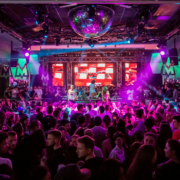In today’s music scene, a DJ’s performance is about more than just sound—visual art has become a key component in creating unforgettable live experiences. From mesmerizing laser shows to cutting-edge AI-driven visuals, the evolution of visual effects has transformed DJ sets into immersive, multi-sensory spectacles.
This article explores the journey of visual art in DJ performances, how modern tools are revolutionizing the craft, and what the future holds for this powerful fusion of technology and music.
The Beginnings: The Laser Era
In the 1980s and 1990s, lasers and simple light shows became staples of the club and festival scene.
- Lasers and Lights: Early DJs used lasers, strobes, and colored lighting to enhance the energy of their sets. These effects, although basic by today’s standards, captivated audiences and laid the foundation for visual storytelling.
- Synchronized Shows: As technology advanced, lighting engineers began syncing light patterns with beats, making the connection between music and visuals more dynamic.
This era marked the start of a symbiotic relationship between visuals and sound—a trend that would only grow stronger with time.
The Rise of Digital Visuals: Projection Mapping and LED Screens
By the early 2000s, digital technology brought a new wave of innovation to DJ visuals:
- Projection Mapping: This technique allowed visuals to be displayed on unconventional surfaces, such as buildings, stage structures, or even DJ equipment. Artists like Deadmau5 and Eric Prydz were early adopters, using projection mapping to create surreal, larger-than-life performances.
- LED Screens: Massive LED walls became a staple at festivals, displaying everything from trippy animations to real-time crowd footage. DJs like Tiësto and Armin van Buuren used these visuals to create a deeper connection with their audiences.
These advancements allowed visuals to move beyond simple light shows, becoming an integral part of storytelling during a performance.
The Modern Era: AI and Real-Time Visual Generators
Today, the integration of artificial intelligence (AI) and real-time visual generators is reshaping what’s possible in live performances:
- AI-Generated Visuals: Tools like Noisee and GAN (Generative Adversarial Networks) allow DJs to create visuals that respond dynamically to their music. For example, AI can analyze the tempo and mood of a track, generating visuals that perfectly complement the vibe.
- Real-Time Interaction: Modern software enables visuals to adapt in real time to the DJ’s performance. Whether it’s a sudden drop or a tempo change, the visuals shift instantly, creating a seamless experience.
- Personalized Aesthetics: DJs can now develop unique visual styles, just like their musical branding. This helps create a signature look that fans instantly associate with their sets.
With tools like AI-driven effects, DJs and visual artists are pushing the boundaries of what live performances can achieve.
Why Visuals Matter More Than Ever
The role of visuals in DJ sets has never been more important:
- Enhancing Emotional Impact: Visuals amplify the emotional connection between the DJ and the audience. A powerful drop becomes even more memorable when paired with breathtaking visuals.
- Immersion and Engagement: In an age of short attention spans, immersive visuals help keep audiences engaged throughout a set.
- Standing Out in the Crowd: With so many DJs competing for attention, a visually stunning performance can set you apart and leave a lasting impression.
Whether you’re spinning in a small club or headlining a festival, investing in visual art can elevate your performance to the next level.
Getting Started: Tools for DJs
Want to incorporate visuals into your own sets? Here are some tools to explore:
- Resolume: A VJ software for creating and controlling visuals in real time.
- TouchDesigner: Perfect for interactive visuals and projection mapping.
- Noisee: An AI-powered tool for generating unique music-responsive visuals.
- MadMapper: Ideal for projection mapping and LED light installations.
Learning these tools allows you to craft visuals that enhance your music and create unforgettable experiences for your audience.
The Future: What’s Next?
As technology continues to advance, the future of visual art in DJ sets is limitless:
- Virtual Reality (VR): VR could allow audiences to experience DJ performances in fully immersive, virtual environments.
- Holograms: Imagine performing alongside holographic visuals that interact with your music in real time.
- AI-Driven Co-Creation: DJs and AI could collaborate to produce visuals and music simultaneously, creating performances that evolve in real time based on audience feedback.
The future promises a deeper fusion of sound and visuals, where technology enhances creativity rather than replacing it.
Conclusion
The evolution of visual art in DJ sets reflects the ever-growing connection between technology, creativity, and audience engagement. From simple laser shows to AI-driven masterpieces, visuals have become a core element of what makes a performance memorable.
If you’re a DJ looking to take your sets to the next level, embracing visuals is a must. Explore tools, experiment with styles, and develop a visual identity that complements your music.
For more tips and resources to help you enhance your DJ skills, visit mp4remix.com. Dive into the world of visuals and watch as your sets transform into unforgettable experiences.
Create. Innovate. Inspire.
4

